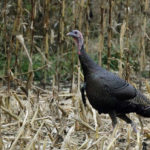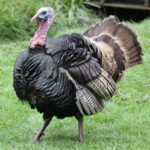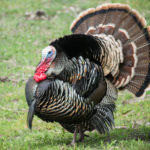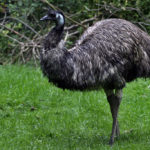Peacocks – information
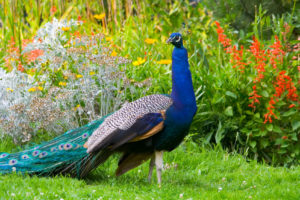 The main decoration and pride of the peacock is its mind-boggling tail. Although there is a small amendment. What we take for the tail, in fact, is strongly developed covering the feathers. Here’s how. But this is not all surprises.
The main decoration and pride of the peacock is its mind-boggling tail. Although there is a small amendment. What we take for the tail, in fact, is strongly developed covering the feathers. Here’s how. But this is not all surprises.
Looking at the peacocks you might think that this kind of bird has many species, so they can be different in color and structure. But this is not so. In the genus Peacocks, there are only 2 species: an ordinary peacock and a green peacock. A little apart is the Congolese or African peacock, which is endemic to the African continent and belongs to the genus of Congolese peacocks. Between these two genera there are significant differences, which manifest themselves both in appearance and in reproduction.
The rest of the variety of the appearance of peacocks is just the result of different options for coloring an ordinary peacock, including a white peacock.
Ordinary or Indian peacock
For the first time this species was discovered in 1758 by Karl Linnaeus. Indian it was named because of its place of residence – tropical forests and jungles of India, Sri Lanka and Pakistan. In addition, it has one more name – blue. And all because his head, neck and chest are painted blue. The back is green and the bottom of the body is black. Female are smaller and not so bright. Plus, they do not have that gorgeous “tail” that nature has awarded to males.
The males have the following dimensions: body length – 100-120 cm, tail – 40-50 cm, and elongated covering feathers nadhvostya (the same chic “tail”) – 120-160 cm on the head flaunts a bunch of their rod feathers with a margin at the ends .
In India, and in general among Hindus, the peacock is considered a sacred bird and therefore it is allowed to walk where it pleases. He fearlessly feeds near settlements and rice fields. But such a neighborhood can endure only those who are very fond of and revere this bird, because, despite their beauty, their singing is difficult to call sweet-eared. Often at night there are sharp shrill screams that can greatly frighten the unused tourists.
Usually their songs can be heard before a storm or the beginning of a monsoon, and during the rainy season they start a marriage game, in which the males are pleased to show the females everything they can. As a result, it turns out that their cries for anything are related to the rain. Therefore, some locals believe that these sacred birds call for precipitation.





